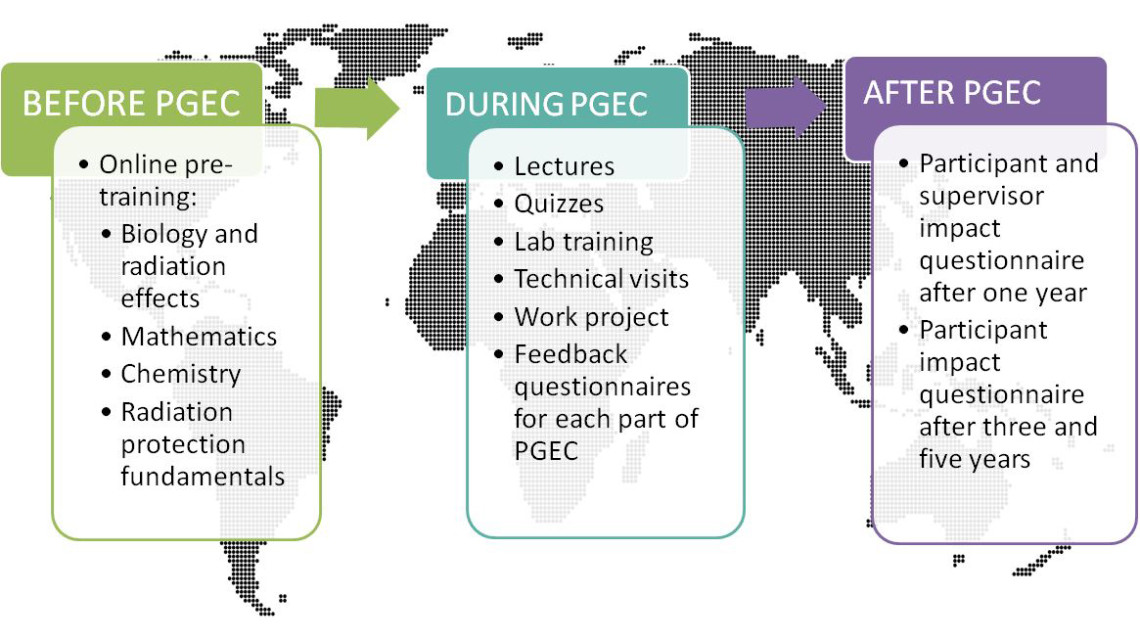Postgraduate Educational Course in Radiation Protection and the Safety of Radiation Sources (PGEC)
The PGEC is a comprehensive training programme that targets young professionals at graduate level or equivalent and helps them build a sound basis in radiation protection and the safety of radiation sources.
Based on a standard syllabus and featuring both theoretical and practical training elements, the PGEC conveys the multidisciplinary scientific and technical foundation of international radiation protection standards and recommendations. It also focuses on their implementation.
The course targets university graduates in physics, chemistry, life sciences or engineering with practical experience of radiation protection and the safe use of radiation sources. Participants are expected to be future senior managers, experts or trainers.
The PGEC is hosted by the IAEA’s regional training centres in Africa (training language: English and French), Europe (English and Russian), Latin America (Spanish and Portuguese) and Asia (Arabic and English).
A blended learning approach

The course’s standard syllabus comprises lectures and practical exercises. The class room teaching is preceded and succeeded by online modules that are conducted with support of IAEA technical staff. The modules before the course refresh participants’ knowledge of relevant subject areas in biology and radiation effects, chemistry, mathematics and the fundamentals of radiation protection, enabling organizers to identify areas in which participants need further support.
The PGEC syllabus includes 12 topics:
- Review of fundamentals
- Quantities and measurements
- Biological effects of ionizing radiation
- The international system of radiation protection and the regulatory framework
- Assessment of external and internal exposures (other than medical)
- Planned exposure situations: generic requirements
- Planned exposure situations in non-medical applications
- Planned exposure situations in -medical applications
- Emergency exposure situations and emergency preparedness and response
- Existing exposure situations
- Training the trainers
- Work project
Participants also conduct an in-depth study of a radiation protection topic and present the results as part of the course assessment.
Follow-up
Participants are invited to take part in surveys one, three and five years after the course. The IAEA uses survey results to gauge how the course affected organizational or national radiation safety infrastructures and to determine how the course contributed to their professional development.
Participants’ supervisors are invited to provide feedback in a questionnaire conducted one year after the course’s completion.


